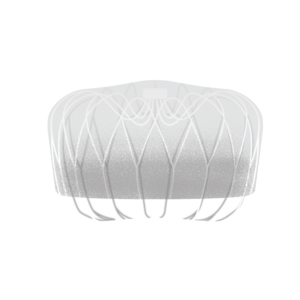Invasive Therapeutic Intervention
Purpose
These therapeutic procedures, in general, involve reestablishment of improved blood flow to the downstream organ by placement of a stent, balloon inflation, or atherectomy procedure. They are performed after angiography has documented that percutaneous intervention is appropriate and technically possible.
Preparation
Preparation for these tests is similar to that for cardiac catheterization (refer to Cardiac Catheterization Preparation above). These procedures must be done in an approved specialized facility.
Purpose
Pacemakers or defibrillators are implanted to provide improved control on individual patients with rhythm disorders. Pacemaker implantation can be used to improve slow or absent cardiac rhythms or improve cardiac muscle performance. Defibrillators are used to convert rapid, possibly lethal cardiac rhythms back to normal rhythm by the process of shocking the heart back to an electrically normal rhythm.
Preparation
These procedures must be done in an approved facility, usually on an inpatient basis. Preparation is similar to that for cardiac catheterization (refer to Cardiac Catheterization Preparation above).
Transcatheter Aortic Valve Replacement (TAVR)
TAVR is a minimally-invasive option for heart valve replacement.
Our mission is to treat patients with the BEST POSSIBLE Option for Aortic Stenosis. You may be a better candidate for Surgical Valve Replacement or medical management. All options will be discussed in detail.
What is Aortic Stenosis?
- Narrowing and hardening of the aortic valve
- One of the more common and serious heart problems many people experience as they age
Who is a candidate for TAVR?
- Most people who are told they have a heart murmur, advanced age, and other concerning health issues(Congestive Heart Failure, Hypertension, Diabetes, COPD)
- Many people who experience dyspnea and fatigue during daily living activities
The Process
- Our structural heart program coordinator will ensure things are arranged correctly and at your convenience.
- Heart valve testing includes:
-
- TAVR CT – a CT (or CAT) scan to take specific measurements of the aortic valve
- Heart Catheterization – this will allow your medical team to check for coronary artery disease
- Dental clearance, please have your dentist confirm you are free from any active infections. Any dental concerns will need addressed prior to TAVR Procedure.
- As part of the guidelines, you will see both a TAVR Cardiologist and Cardiothoracic surgeon to discuss in detail all valve replacements and what is best for you.
- Here are some helpful documents
-
How it Works
- The procedure is done by a cardiologist and a cardiothoracic surgeon team
- TAVR allows a new valve to be inserted through a catheter rather than via open-heart surgery
- The catheter is typically inserted through the leg, but can also be inserted through the arm or chest
- The new valve is inserted within the diseased valve, allowing it to function properly
The Recovery
What can I expect in the first few days??
- Most patients stay 1-2 nights on average in the hospital
- Light duties, no lifting, pushing, or pulling over 10 pounds for 1 week
- Daily walking is encouraged
Contact the Structural Heart Program at 208.416.9153 to learn more about the TAVR procedure.
Left Atrial Appendage Occluder (LAAO): A One-Time Implant that Helps Reduce AFib Stroke Risk
Kootenai Health has performed nearly 500 LAAO procedures.
 Left atrial appendage closure devices are implanted to reduce the risk of stroke in patients with nonvalvular atrial fibrillation (NVAF).
Left atrial appendage closure devices are implanted to reduce the risk of stroke in patients with nonvalvular atrial fibrillation (NVAF).
Who is a candidate?
Patients must have an increased risk for stroke with an appropriate reason to seek an alternative to blood thinners. LAAO is a one-time, minimally invasive procedure for people with atrial fibrillation not caused by a heart valve problem (also known as non-valvular AFib) who need an alternative to blood thinners. The LAAO devices are about the size of a quarter and made from very light and compact materials commonly used in many other medical implants.
Left Atrial Appendage (LAAO) implants may be right for people who:
- Have atrial fibrillation not caused by a heart valve problem (also known as non-valvular AFib)
- Have been recommended for blood-thinning medicines by their doctor
- Can take short term blood thinners but need an alternative
People may need an alternative to warfarin for any one of these reasons:
- Have had major bleeding while taking blood thinners
- Have a lifestyle, occupation, or condition that puts them at risk for major bleeding
- Have difficulties taking their blood thinner as prescribed (staying in INR range, following dietary restrictions, missing doses, or inability to afford the prescription)
The Process
Patients who may qualify for an LAAO implant are first scheduled for a special consultation with one of our cardiologists to discuss specific risks and benefits. The cardiologist will also go over the details of the procedure. Following the initial consultation, patients meet with an implanter – our team of specialists will work with all your physicians to ensure we have the safest treatment plan before scheduling the procedure.
 The Procedure
The Procedure
The LAAO device is implanted into your heart in a minimally invasive, one-time procedure. Your doctor makes a small cut in your upper leg and inserts a narrow tube, as done in a standard stent procedure. Your doctor then guides the LAAO device into your heart’s left atrial appendage. The procedure is done under general anesthesia and takes about an hour. Patients commonly stay in the hospital overnight and leave the next day.
Learn more about how one LAAO device, the Watchman, works
Following the Procedure
Following the procedure, your doctor will prescribe you blood-thinning medication for 45 days or until your left atrial appendage is permanently closed off. During this time, heart tissue will grow over the implant to form a barrier against blood clots. Your doctor will monitor this process by taking pictures of your heart to see when you can stop taking your blood thinners.
Your doctor will then prescribe a medicine called clopidogrel (also known as Plavix®) and aspirin for you to take for six months. After that, you’ll continue to take aspirin on an ongoing basis. A very small number of patients may need to keep taking blood thinners long term.
- Most patients stay one night at the hospital
- One week of light duties while the groin incision site heals
Medications following the procedure, you may or may not be put on.
- NOAC/Warfarin and ASA 81mg for 45 days
- Plavix and ASA 325mg until the six-month mark
- A daily Aspirin (325mg) regimen
Some helpful documents
Contact the Structural Heart Program at 208.416.9153 to learn more about the left Atrial Appendage Occluder (LAAO) procedure.








